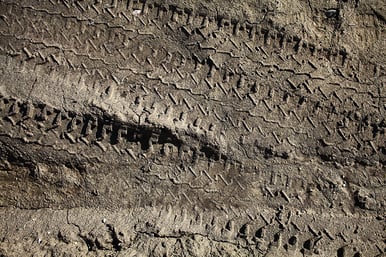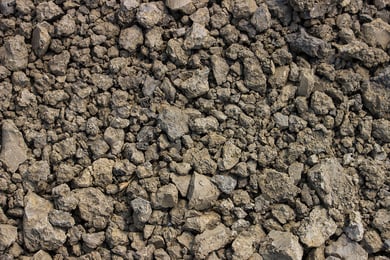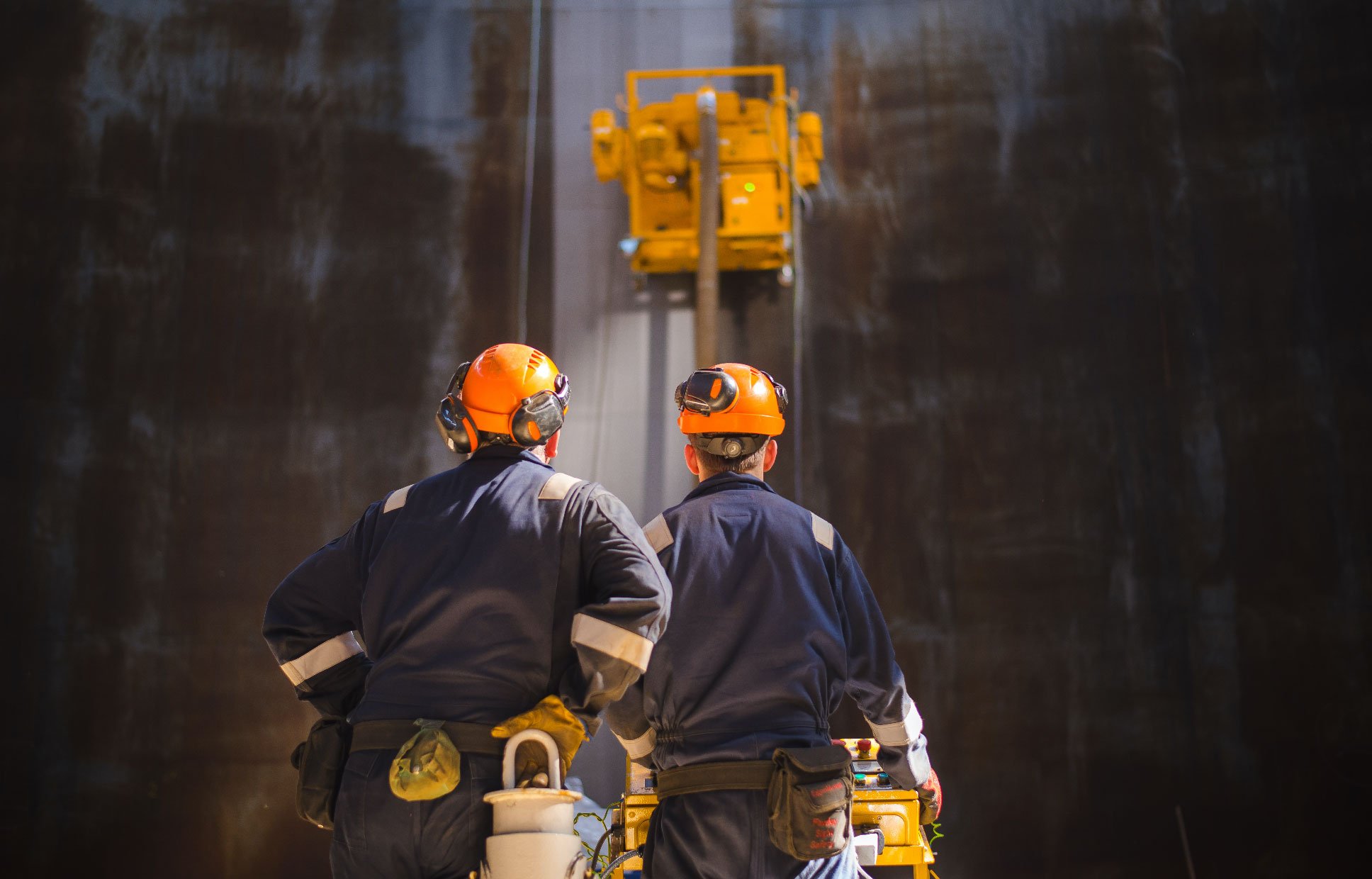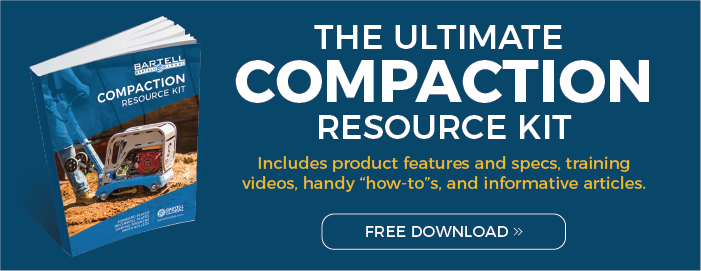
When placing concrete or hardscape, it is critical to have the soil you are going over to be in an acceptable condition for your project. While things like water migration, possible erosion and other factors are very important, the most important aspect of site-prep is compaction! All your efforts at placing a great slab, building a beautiful house, all fall apart if the foundation you are building on fails!
On building sites, there are usually two choices that contractors will use to accomplish soil compaction:
- A “Tamping Rammer”—or sometimes referred to as a “Jumping Jack”—is designed to jump up and down vertically on a small plate or 'shoe' area at the base of the unit which impacts the soil to achieve compaction.
- Or you can use a “Vibratory Plate Compactor” to create soil compaction. These units vibrate the soil, shifting the particles and “locking” them into a non-moving compacted state.

RAMMER PLATE COMPACTOR
Both these machines basically do the same job: they compact the soil. But each unit has its own advantages and disadvantages, especially when it comes to soil types and project space limitations. Let's look at each in a little more detail.
SOIL
Soil is the first factor to consider when choosing the right compactor — and to keep things simple — soil types can be grouped into 2 major types...

COHESIVE
Cohesive soil is made up mostly of clay, silt, very fine particles that are mostly too small to see. This material is easily molded when moist, holds its shape, and becomes very hard when dried. (Ever have a dirt-clod fight with your brother growing up? You probably could have called it a COHESIVE SOIL fight.) When compacting cohesive soil, a RAMMER works best as its ramming action removes air pockets and locks the soil together.

GRANULAR
Granular soil consists of visible chunks of rock, pebbles, sand as well as finer particles. Unlike cohesive soil, granular soil does not hold together when compressed and easily falls apart when agitated. But it really compacts well! For this type of soil, a PLATE COMPACTOR is best because it works so well at shifting the different-sized grains into a stable, locked, compacted state. In almost all cases you would NOT want to use a Rammer on granular soil, as the vertical compaction force will not compact it properly. Instead it tends to displace the soil to either side, drilling down instead of compacting.
FOR MORE INFORMATION ON SOIL TYPES CLICK HERE
Terrain
The terrain of the area to be compacted is another important consideration.
- Trenches, edges and other smaller areas:
The RAMMER works best for these areas as the smaller footprint and mobility make a rammer a great option. - Large areas:
The PLATE COMPACTOR is more efficient as it can work at a rate 3-4 times faster than a rammer. It will also give you a smoother, more consistent finish. - Amount of “LIFT” or layer of material being compacted:
Usually, you want to compact only about 6" of material at a time with a Vibrating Compaction Plate. The smaller footprint of the rammer makes it able to compact a greater thickness of lift, around 10" at a pass.
CONCLUSION
WHAT TO CHOOSE?
RAMMER or COMPACTION PLATE?
The reality is this, there usually is no best “one or the other” choice of equipment when it comes to compaction. As a professional contractor, it would be best to invest in BOTH Rammers and Plate Compactors in order to be well equipped to tackle the various types of compaction projects/needs you will have on your job sites.
Think about it like this... If I was trying to decide if I should have a Phillips head screwdriver OR a Robertson head screwdriver in my toolbox, the right answer is obvious... you will need BOTH! The same applies to your compaction tools... Both are essential for the professional contractor.


 By
By 